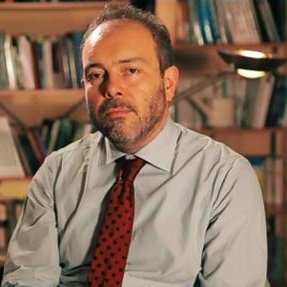Reshaping pharmaceutical marketing: surrendering to complexity

As we have all noticed, it is not only the unpredictability of events (COVID-19, Wars and who knows what else), but rather how much the immediate interdependence and interconnection between environments, territories, peoples and markets generate greater risks and make them expand.
The global network, foreseen from the first movements born in Seattle, means that every possible change, even potentially foreseeable ones, causes effects on a planetary scale. Like a deadly shock wave that finds: in the speed of transmission, in dematerialisation, in transport, in networks the way to transfer and increase its effect.
The best skill today is not to predict, to know how to anticipate events or foresee the effects. It is now necessary to learn to act differently. Acting in complexity.
I am afraid we will return to this theme again, but starting with Edgar Morin's reflections, complexity has been addressed in science with modelling that deals with its individual parts, basically 'trying to simplify and then regroup', finding solutions and then reassembling. This has unfortunately run up against quantum physics and all contemporary science. In order to try to define complexity, we must try to classify (do you see us proceeding by patterns?) problems and environments. We start by dividing systems into: ordered and unordered. Ordered systems are those in which the relationships and cause-effect actions are stable and linear. Conversely, unordered systems are those in which these are non-linear and unstable.
Within ordered systems, one can distinguish simple or complicated domains and systems. In both cases, the problem can be solved by a governable process in which the precision of the execution, the reliability of the measurements, allow a repeatable conclusion to be reached, whether simple or complicated. A simple recipe for making biscuits or the assembly of a watch can be traced back to orderly systems: they require high skill and accuracy, but in the end the process is itself linear. Correct design and execution lead to the expected, reproducible result. There are best practices, the experience of elders: we can also afford to say that this is how it has always been done in these areas, as experience and iteration have led to the construction of a well-trodden algorithm whose beginning, activity, resources, time, and conclusion are known.
Alas, unordered systems can be chaotic or complex. Chaotic systems are unstable, non-linear and unpredictable, the relationships between elements are unknown, and causal elements cannot be defined, even a posteriori. It is futile to try to govern them. Complex systems are not stable or linear, but the parts are interconnected in interdependent causal relationships. In this case, it is not possible to define the processes and consequences of actions a priori, as each action has a relationship with other causes. In the latter case, although data is available, it is not possible to define what actions need to be carried out to achieve the goal with certainty.
Apart from the schematisation, it is evident that in ordered systems, the analysis and implementation have a known end goal and the whole process is an algorithm to achieve it. In ordered systems, it is right to reason about the goal and to define plans and their timely execution. In the case of complex systems, what guides us is the starting condition, on which we proceed with action, continuous learning and adaptation, reassessment of the initial condition and consequent action.
In ordered systems, each thoroughly examined problem offers better grounds for understanding and thus for defining the plan of action: afterwards, the monitored parameters and the correctly executed action can guarantee success. In unordered systems, it is futile and counterproductive to stick to the initial plan, as the parameters will constantly change and the evolution is not necessarily as expected and is not linear.
That long and learned dissertation having been made, the fact remains that the pharmaceutical world has simply gone from ordered to unordered and from complicated to complex.
In short, we have moved from the value of experience to the importance of adaptation; from the development of sound forecasting plans to continuous reviews based on empirical observation; from a focus on execution to an understanding of the scenario; from periodic data analysis to qualitative measurements.
The pharmaceutical world has changed: the doctor now receives remotely or virtually a similar amount of updates and medical-scientific information as he or she does face-to-face. The amount of time spent on NPPs (Non Personal Promotion) has reached the share of time spent on face-to-face activities. Multichannel models therefore have an absolute necessity to be used in every context, from the mature product to those in launch, from the product for hospital use to retail in the pharmacy, from the class A drug to the supplement.
Prescriptions that have worked will lose their effectiveness over time, because the physician's focus is shifting and the interconnectedness of players is increasing. Two forces that simply push from complicated to complex. From complicated to complex. Hence, ordered randomness steps - even multiple ones - get lost in interconnections and feedback where it is more important to read, interpret and react quickly than to plan, order, and repeat.
The response that companies might be tempted to implement in the face of complexity is to recreate complexity within: the solution is instead to understand the new scenarios that arise and to continually adapt. The world has become multi-verse, multi-channel, multi-network: we act accordingly.

Salvatore Ruggiero
Salvatore Ruggiero nasce a Napoli nel 1964, si definisce un imprenditore seriale. Oggi a capo del gruppo Merqurio, di cui è stato anche fondatore. Sposato con Giuseppina, ha due figli e nel tempo libero, tra un'escursione e un'altra, tra un film ed un altro, è alla ricerca della ricetta dei biscotti perfetti.
